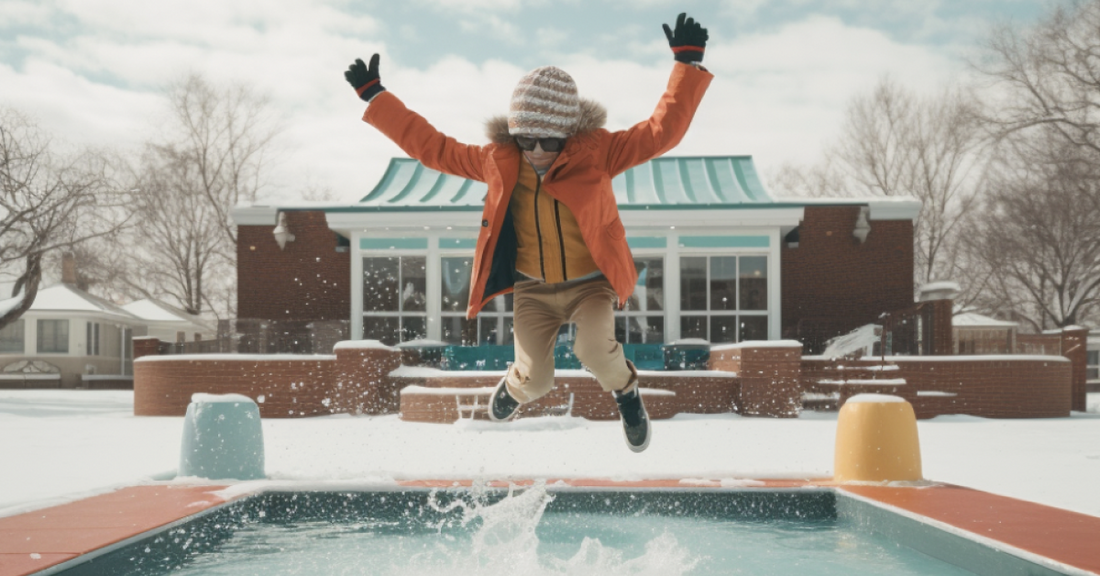As a parent, when your child is struggling to deal with big emotions, it can be almost as scary for you as it is for them. Whether your child is two,12 or 17, you can feel completely helpless in the face of abrupt mood changes, outbursts, impulsive behavior, crying spells, aggression, violence, or any other sign that the child is feeling out of control emotionally.
It's no secret that we are fans of cold plunging here at MUD\WTR. The practice offers an array of both physical and mental and physical benefits. But it's a lesser-known fact that cold therapy can also be beneficial for children, especially when they are trying to regulate big emotions. But before we get into that, let's talk about what emotional regulation and dysregulation really mean.
First off, whether you are an adult or a child, it’s normal to experience strong emotions. But when feelings such as anxiety, stress, depression, fear, sadness or anger get to the point that they are overwhelming and you have trouble controlling your actions based on those feelings, that can be considered a state of emotional dysregulation.
“Dysregulation affects the brain and nervous system,” explained Paige Armstrong, MSW, LCSW, a Raleigh, NC-based psychotherapist. “The nervous system goes into fight, flight, freeze or fawn, and then the goal is to soothe and calm the nervous system so that the person can feel regulated.”
Is Cold Plunging Actually Good for Kids?
Once a person slows down and calmly responds to emotions, they are back to regulating their feelings. This is far easier said than done sometimes, especially for children. But there are many age-appropriate tools adults and children can learn and practice emotional regulation. Armstrong recommends employing mindfulness and sensory techniques that bring people back to the present moment.
A few of her favorite techniques are the box-breathing technique, tapping videos, YouTube meditations and the 54321 technique. One of the more surprising tools Armstrong recommends is cold therapy. Cold therapy is especially helpful when attempting to regulate big emotions because feeling cold can divert the brain's attention, help ground people in their bodies and provide immediate emotional relief. Splashing the face with cold water, immersing the face in a bowl of ice water or simply holding ice cubes or an ice pack can help dysregulated people return to a state of calm.
“People are usually really surprised about that one,” Armstrong says. “When I give them the assignment, they say, ‘This won’t work,’ but then they try it and are surprised that something so simple actually works. And once they know it works, they will actually continue to use that technique.”
Why Is Cold Plunging Good For a Child's Mental Health?
MUD\WTR’s own CCO, Emma Nelson, recently spoke with her child's therapist about her daughter's big feelings and reactions and was surprised when her therapist suggested a kid-friendly form of cold therapy as a methodology. The therapist suggested having her daughter splash cold water on her face or hold an ice pack.
“As I’m sure many parents of school-aged kids experience, we were struggling with how to help our daughter process big feelings (anger, frustration) and transitions (moving from TV to cleaning up or coloring to heading to school),” said Nelson. “Our therapist gave us a handout where the girls were allowed to select one of six ways to help them work through these tough moments - cold plunging (i.e. holding an ice pack), breathing (i.e. spinning a pinwheel), and thinking about a positive time were all included.”
Nelson said that her daughters opted for the ice pack method.
“My girls would select holding an ice pack in moments of big feels because they thought it was fun,” said Nelson. “Especially when the ice pack had a favorite character on it. The ice pack served as both a novelty and a way to slow their breathing as they held it.”
For any parents who want to try cold therapy with their children, Nelson recommends doing it with them to start.
“Do it with them. Acknowledge how they’re responding to the cold therapy,” said Nelson. “And praise them for trying something new!”
The Dos and Don'ts of Cold Plunging With Children
The hardest thing about emotional regulation, Armstrong points out, is to remember to use the tools when you’re in a state of dysregulation.
“The prefrontal cortex is offline, so we don’t think about using the tools,” said Armstrong. Keeping a list of regulation techniques handy for such moments can help older kids remember to use these tools. With younger kids, parents can remind children which techniques to use.
For building long-term mental health resiliency, cold-exposure enthusiasts widely tout full-body cold plunging for its ability to improve mood and focus, and ease anxiety and depression, in addition to a wide range of other mental and physical benefits. One way people ease into full-body cold plunging is by taking cold showers.
“Mentally, it helps with general anxiety and depression, and I think a lot of that is because it brings you into the moment,” says Brent Harrison, a young water sports enthusiast who has been cold plunging several times a week for the last two years. “It’s such an intense sensation that you have no other choice but to be in the moment. Committing to this and overcoming my fear of cold water makes me feel mentally more resilient and gives me a lot of clarity and energy.”
An article on mentalhealthcenter.com explains the benefits this way: “Cold exposure causes the body to produce hermetic stress, which actually serves as good stress as it activates genetic pathways that help in the regulation of life’s stressors. This increase in stress regulation decreases the body’s sensitivity to stress and increases stress tolerance.”
Regular cold plunging can have the same benefits for children, but it is important to take precautions with when cold-plunging with children.
First off, never force a child to cold plunge. If your child is interested in cold plunging, you can encourage and suggest, but cold plunging needs to be a voluntary effort. For children, the temperature should be warmer, 50 to 60 degrees, because children do not tolerate cold water as well as adults, and the duration should be shorter, maybe one to two minutes. Be sure your children are supervised at all times, know all safety tips relative to cold plunging, and consult your pediatrician before trying this.
Teaching your children the practices they need to regulate their emotions, whether through cold therapy or another technique, will help them feel more in control of their lives and make for a happier family all around.
Molly Harrison loves her life on a sandbar in the Atlantic Ocean. Her home, Nags Head, is on a barrier island as far east as you can get in North Carolina, and she spends as much time as possible in and on the water, at the beach, and in the maritime forests. In between, she works as a freelance writer and editor, yoga instructor, retreat leader, and Reiki practitioner. Her passions are helping people feel their best through exercise, energy healing, and nature.
Photo by Tim Marshall on Unsplash
Read More: What It's Like to Take Cold Showers
Read. More: How to Cold Plunge on Any Budget
Listen: How to Find Balance in Relationships: Interdependence vs. Codependence




